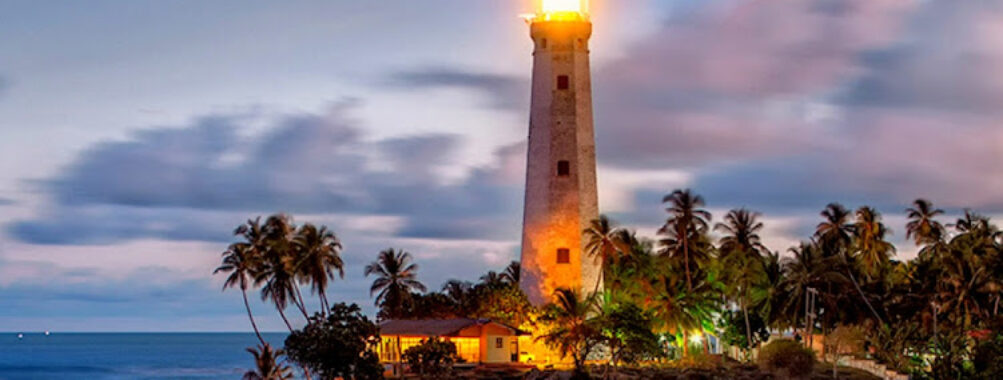
Dondra
Table of Contents
Description
As the southernmost point of the enchanting island of Sri Lanka, Dondra captivates visitors with its historical significance and coastal beauty. I remember my first visit here – standing at the edge of this remarkable peninsula felt like being at the end of the world, with nothing but the vast Indian Ocean stretching endlessly before me. The iconic white lighthouse stands tall against the azure sky, a proud sentinel marking this geographic milestone.
The sea breeze here hits different – it carries stories of ancient maritime trade routes and centuries of cultural exchange. What really grabbed my attention were the scattered ruins of Hindu temples from the Tenavaram complex, whispering tales of a bygone era when this spot was a major religious center. Trust me, these aren’t your typical tourist-packed ruins – they’re raw, authentic pieces of history that make you feel like an explorer discovering them for the first time.
Key Features
• The magnificent Dondra Head Lighthouse, constructed during British colonial times, rises 49 meters above the surrounding landscape
• Ancient ruins of the Tenavaram temple complex, showcasing intricate stone carvings and architectural elements from various historical periods
• Pristine beaches with dramatic coastal views, perfect for those Instagram-worthy sunset shots
• Local Buddhist vihara (temple) that adds to the area’s spiritual significance
• Rich marine biodiversity, making it a prime spot for whale and dolphin watching during certain seasons
• Traditional fishing communities that still maintain age-old practices
• Untouched coastal vegetation and natural rock formations
• Historical maritime significance as a former major port
Best Time to Visit
From my experience traveling through Sri Lanka, December to April is your sweet spot for visiting Dondra. The weather’s just perfect then – bright sunny days with manageable humidity levels. But here’s a local secret: if you’re into whale watching, plan your trip between November and March. That’s when these magnificent creatures are most active in these waters.
Avoid the monsoon season from May to September unless you’re cool with sudden downpours (though they do make for some dramatic lighthouse photos!). Early mornings are especially magical here – I’ve spent countless dawn hours watching local fishermen head out to sea, their traditional boats dotting the horizon.
How to Get There
Getting to Dondra is part of the adventure. The nearest major town is Matara, and from there it’s a scenic coastal drive that’ll take about 20 minutes. You can catch regular buses from Colombo to Matara, though I’d recommend taking the coastal train – it’s slower but offers breathtaking ocean views along the way.
From Matara, tuk-tuks are readily available for the final stretch to Dondra. If you’re driving yourself (which I totally recommend for the freedom it gives you), the roads are decent but keep an eye out for unexpected coastal curves and occasional wandering livestock – they’re part of the local charm!
Tips for Visiting
Let me share some hard-earned wisdom from my visits to Dondra. First off, bring good walking shoes – the terrain around the ruins and lighthouse can be uneven and you’ll want to explore properly. Pack a hat and sunscreen because the tropical sun here means business, especially between 10 AM and 3 PM.
The lighthouse has specific visiting hours, so check these in advance. When visiting the temple ruins and active religious sites, remember to dress modestly – shoulders and knees covered. I learned this one the hard way! Carry cash as many local vendors don’t accept cards, and try the fresh seafood from the small restaurants near the fishing harbor – some of the best I’ve had in Sri Lanka.
Early morning visits offer the best photo opportunities, especially of the lighthouse. And don’t rush – Dondra’s charm lies in its unhurried pace. Take time to chat with locals, many of whom have fascinating stories about the area’s history and folklore. If you’re interested in whale watching, book through reputable operators in advance – the experience is worth every rupee.
Keep some time flexible in your schedule – sometimes the weather can change quickly, or you might stumble upon an interesting local festival or fishing activity that’s worth sticking around for. And honestly? The best experiences I’ve had here were the unplanned ones, like joining a group of local kids flying kites near the lighthouse or helping fishermen pull in their morning catch.
One last thing – bring a good camera. The combination of historical architecture, coastal landscapes, and local life makes Dondra a photographer’s paradise. Just remember to ask permission before photographing people, especially around religious sites. The locals are generally friendly and happy to oblige if you approach them with respect and a smile.
Location
Places to Stay Near Dondra
Find and Book a Tour
Explore More Travel Guides
No reviews found! Be the first to review!